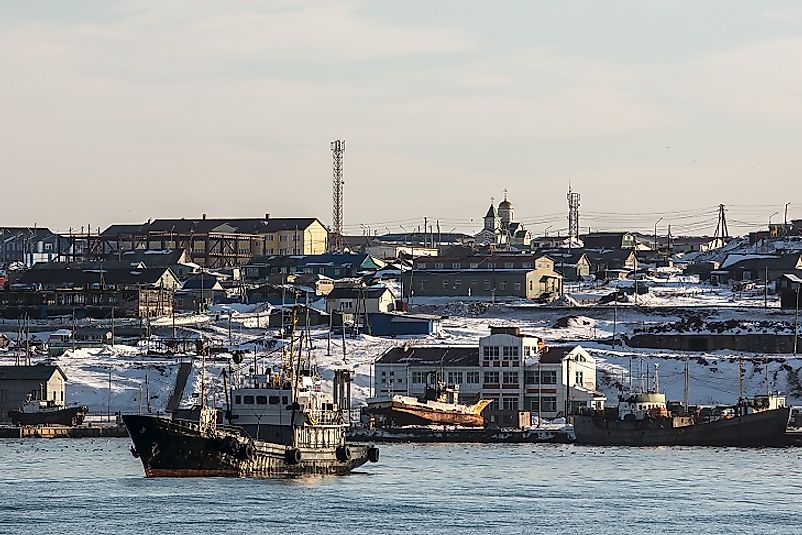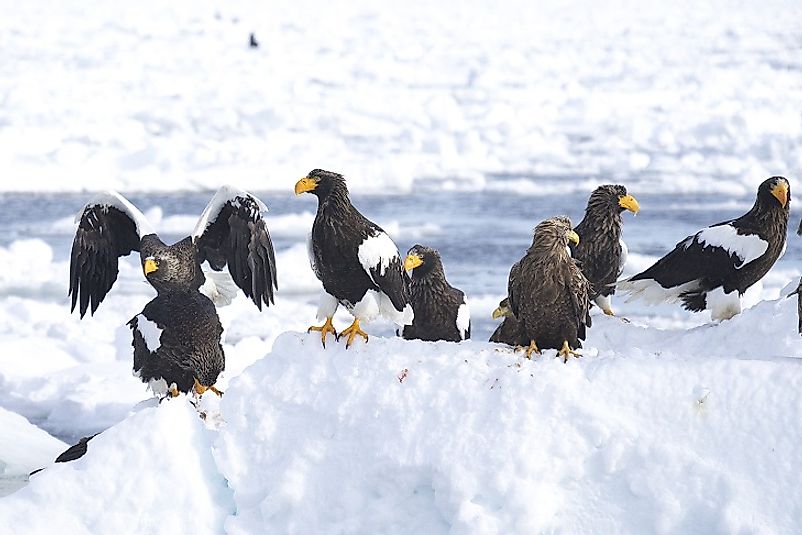Kuril Islands Of The Northwest Pacific

5. Location, Terrain, and Climate
Kuril Islands lie in the Sakhalin Oblast region of Russia, which is a volcanic archipelago. This Island stretches from Hokkaido, Japan to Kamchatka in Russia, and covers a distance of 1,300 kilometers. It separates the Sea of Okhotsk from the North Pacific Ocean, and has a chain of 56 islands and many minor rocks. It lies along the ring of tectonic instability that encircles the Pacific Ocean, and is known as the Ring of Fire. Climatic conditions of the Kuril Islands are severe, with cold, stormy, and long winters, foggy summers, and annual precipitation in the area of 760 to 1,020 millimeters which mostly falls in the form of snow. The climate ranges from the Temperate to the Sub-Arctic types, and there are volcanoes, namely Tyatya Volcano and Alaid Volcano, giving the region some of its highest elevations.
4. Historical Role
The Ainu people originally inhabited the Kuril Islands and with the coming of 17th and 18th Centuries, the Japanese and Russians settled in the area. The Treaty of Shimoda concluded between Japan and Russia, and it gave the southernmost islands to Japan, and the rest of the chain to Russia. There were many instances where Russia and Japan claimed their right on the Island. With the Treaty of Saint Petersburg in 1875, Japan got his rights on Sakhalin and Russia all over the Kuril Islands, which was south of Kamchatka. After the Russian-Japanese war in the years 1904 and 1905, the Japanese got fishing rights in the Russian waters with the Fisheries Agreement until the year 1945. The current situation in the year 2013 stated the population of the Island to be approximately 19,000 people, which mainly includes the Russians, Tatars, the Oroch, Ainus, and Ukrainians. The year 2014 reported that out of 56 islands, only eight inhabited islands and from which Iturup Island, frequented by a footfall comprised 60% by Ukrainians.
3. Modern Significance
The occupation of the people living in Kuril Islands is largely derived from fishing, and there are mineral deposits found in the area including sulfur, pyrite, and poly-metallic ores. The exploration of the oil from the area will boost the economy, and Russia is working on the rising of the economic infrastructure in the area. Workers in the Kitovy Bay built the breakwater, as barges are the important mode of the transport in this area. A newly constructed road also passes from there, which is now going to be a site for the airport to be named Yuzhno-Kurilsk-Mendeleyevo in the Kuril Islands. For solving the electricity issue, at Mount Baransky, the government is upgrading the geothermal power plant.
2. Habitat and Biodiversity

The Kuril Islands area supports all manner of marine life, and the Island is a crucial habitat for the sea urchins, squid, and mollusks found in the Pacific waters. The fishes like Pacific cod, flatfish, Walleye Pollock, and Japanese Sardines, aquatic mammals such as sea otters, and seabirds like gulls, auklets, and kittiwakes, are often found in and around the islands.
1. Environmental Threats and Territorial Disputes
Both the Japanese and Russian sides are increasingly deviating from their past acceptance of peace treaties, especially since the installation of missiles by Russia on the Kuril Islands. Before further treaties are negotiated, each wants territorial disputes regarding the division of the islands to be resolved first. The threats coming from the eruption of volcanoes and the event of earthquakes duly affect both the natural environment and human Kuril Islanders as well.











